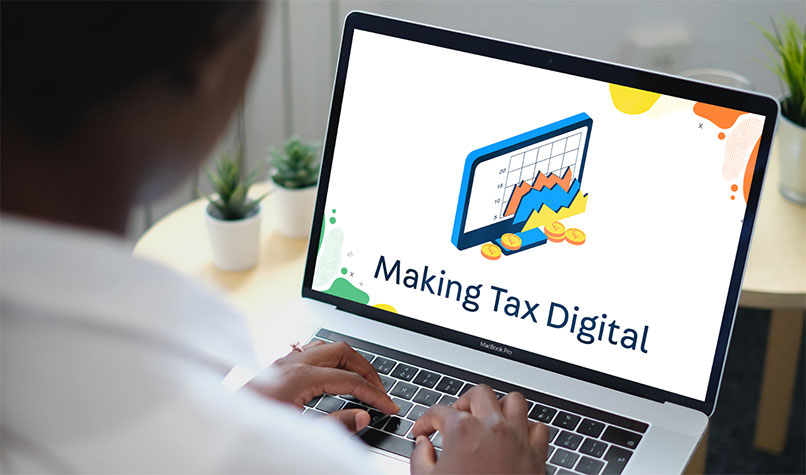Making Tax Digital (MTD)
Services
Making Tax Digital (MTD)
Making Tax Digital (MTD) for Income Tax is a new way to report income from self-employment and property to HMRC. From April 2026- Ready for SignUp
Overview
Making Tax Digital (MTD) for Income Tax is a new HMRC initiative requiring digital reporting of income from self-employment and property. It will be rolled out in stages from April 2026 and replaces the traditional Self Assessment method for those within scope.

Who Is Affected?
The benefits of embracing MTD with [Company Name] are extensive. By leveraging digital tools and software, businesses can streamline their accounting processes, reduce errors, and enhance overall efficiency. Our proactive approach ensures that you not only comply with MTD regulations but also harness the potential for improved financial management and decision-making.
MTD income tax’s impact on unincorporated businesses and landlords
Businesses and landlords must maintain digital records and submit quarterly updates and a year-end report via compatible software. Manual paper submissions will no longer suffice.
When does it start?
The phased rollout starts in April 2026. Existing businesses qualifying by income must comply based on their 2024/25 tax return. New businesses must comply from the third tax year after exceeding the threshold.
Requirements for Compliance
Eligible taxpayers must maintain digital records and submit quarterly updates using MTD-compatible software. Paper records are no longer sufficient. A final year-end declaration is also required.
Key Dates and Phases
MTD starts 6 April 2026. Quarterly updates follow standard or calendar quarters, with the first due 7 August 2026. Final returns will be due by 31 January after the end of the tax year.
Digital Exclusion Criteria
Individuals may be exempt if they are digitally excluded due to age, disability, remote location, or religious beliefs. Simply not having broadband access does not qualify.
Software and Tools
HMRC will not provide its own software but expects third parties to offer free tools for basic cases. Software must support digital records, quarterly updates, and adjustments.
Record Keeping
Digital records must include individual transaction details: dates, amounts, and categories. Paper receipts may still be kept, but summaries are not acceptable. Joint property owners report only their share.
Quarterly Updates
Taxpayers must submit data quarterly, either by standard tax year quarters or calendar quarters. Deadlines are fixed and updates may be sent early. Small businesses can continue to use simplified reporting.
Year-End Tax Submission
After the fourth quarterly update, two steps finalize the annual tax position: (1) BSAS for adjusting quarterly data, and (2) a final return combining all income and claims.
Exiting the MTD System
Taxpayers may opt out if income remains below the threshold for three consecutive years or the business ceases. Fluctuating income alone is not sufficient to exit unless consistently below the threshold.
Further Resources
Visit GOV.UK for detailed guidance, software lists, and penalty rules. HMRC also offers step-by-step resources for both agents and individual taxpayers.
FAQ's
Frequently Asked Questions
We require physical paperwork, and we offer two options: we can collect documents from clients or they can drop them off at our offices. Additionally, we accept scanned bookkeeping documents via cloud services.
We prefer to receive paperwork on a monthly basis to ensure timely and consistent processing.
We employ a range of bookkeeping software including Sage, Xero, QuickBooks, and Microsoft Excel.
Upon identifying an error, we'll promptly get in touch, detail the mistake, and make the necessary adjustments to rectify the records accordingly.
If you're working with another bookkeeper, they may typically forward the paperwork at the year-end. While we can accommodate this arrangement, please note that handling your paperwork on a monthly basis with us tends to be more cost-efficient in the long run.
